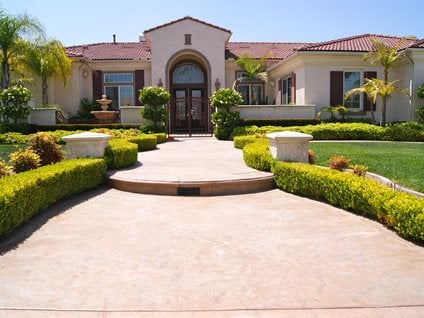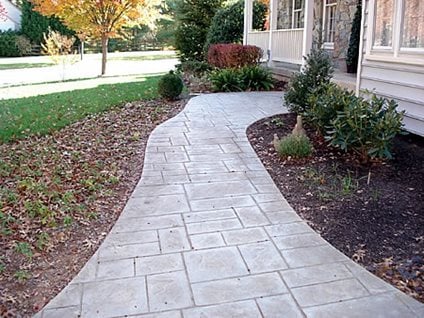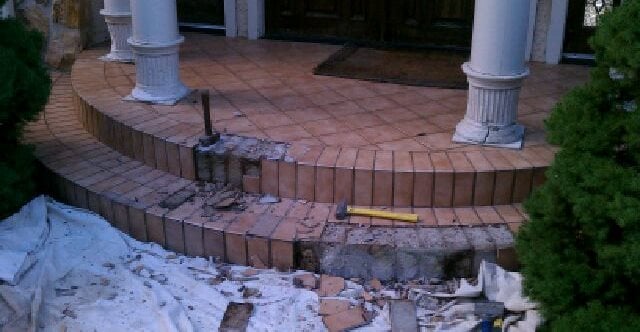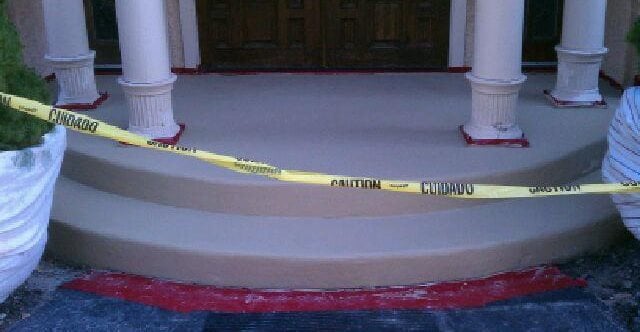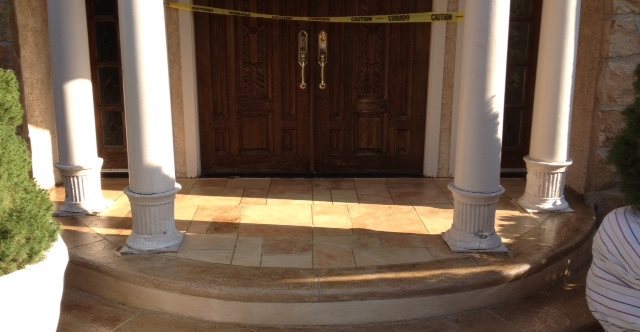- Concrete Walkways and Sidewalks
- Concrete Walkway Pictures
- Decorative Finishes for Existing Walkways
- Fix and Color Existing Concrete Walkways
- Sidewalk Repair - Resurfacing Concrete Walkways
- Design Ideas for Concrete Walkways
- 10 Ideas for Concrete Entryways
- Stairs and Steps
- Stamped Concrete Walkways
- Concrete Garden Bridges
- Front Porch Designs and Ideas
- Installing and Maintaining Concrete Walkways
- Concrete Walkway Cost
- Building Tips for Concrete Sidewalks & Walkways
- Sealing and Protecting Walkways & Sidewalks
- Sidewalk Pavers
- Other Resources
- Concrete Contractors: Find Products and Suppliers
Walkway & Sidewalk Cost
An overview of concrete walkway costs and price rangesThe cost of a concrete walkway can vary widely depending on its size and finish. Most U.S. homeowners pay between $6 and $12 per square foot for installation of a new concrete walkway. Prices can go beyond this if significant grading is required or a complex decorative finish is requested.
Get estimates for your concrete walkway from contractors near you.
Basic: $6-10 per square foot
For just a few additional dollars per square foot, you can enhance a concrete walkway beyond just plain gray.
- One coloring method
- A textured rock salt or broom finish
- Exposed aggregate
Mid-Range: $8-12 per square foot
The next price range includes elaborate decorative effects that allow for patterns and color contrast.
- One stamped pattern
- Two or more colors
- A decorative border
- Engraving
High-End: $12 and up per square foot
You’ll pay the most for a completely custom walkway that requires special techniques or hand-applied colors.
- Borders, sawcut designs, and hand-applied chemical stain accents
- Advanced stenciling with hand-applied accents
- Unique shapes that require detailed forms
HOW TO CALCULATE THE COST OF A CONCRETE WALKWAY
To get an idea of the total cost for your project, here are the steps:
- Measure and note the dimensions of the walkway
- Multiply length by width to find the square footage
- Take the square footage and multiply by the price per square foot ($6-12)
Here’s an example for a walkway that’s 4 feet wide and 35 feet long:
- 4ft x 35ft = 140 sq ft
- 140ft x $6 = $840 (low end)
- 140ft x $12 = $1,680 (high end)
So, for a 140 square foot walkway you’d expect to pay between $840 and $1,680.
SIDEWALK COST FACTORS
- Amount of concrete needed
Determined by width and length of walkway - Shape of walkway
Straight edges are easier to form than curved edges - Amount of prep work required
If the area is un-level and requires grading the cost will increase - Design complexity
Multiple colors will cost more, as will complex patterns, borders or bands - Decorative finish
A rock salt or broom finish is rather affordable, while stamping and engraving are more expensive
COST COMPARISON
Here’s how sidewalk replacement and resurfacing compare to having a new walkway poured:
Sidewalk replacement cost
Replacing an existing sidewalk or walkway that has severe cracks or is badly out of level can be expensive. In addition to the installation cost, expect to pay for demolition and removal of the old concrete as well. This can run an extra $5-8 per square foot. However, some contractors will lower this amount or charge a flat fee, especially if they will also be pouring your new walkway. You could also consider doing the demo work yourself to save money.
Before, during and after photos of an 80 square foot front entry walkway and steps resurfaced by Tri-State Concrete Resurfacing LLC. The overall cost for this project was $2700.
Walkway resurfacing cost
If you have an existing sidewalk that just needs cosmetic improvements, resurfacing is a great option. An overlay is applied over the old concrete to give it a fresh look. For basic resurfacing, the cost could be as low as $3 to $7 per square foot, but if you choose a colored and stamped overlay you might pay as much as $8 to $20 per square foot.
WALKWAY IDEAS ON A BUDGET
If you’re looking to save money, here are a few ideas:
- Stick with a straight layout, because the formwork is less complex
- A broom, rock salt or exposed aggregate finish are affordable upgrades to plain concrete
- Seamless texture skins are a type of stamp that add realistic texture, but at a lower cost
- If concrete is out of your budget, consider informal materials like gravel or mulch
- Precast pavers or stepping stones can also be arranged to create a path
CONCRETE WALKWAYS AND HOME VALUE
Keep in mind that while having a walkway poured does require an up front investment, it often improves the value and resale potential of your home. Plus concrete lasts for years and requires little maintenance compared to less expensive materials.
Related Information:
